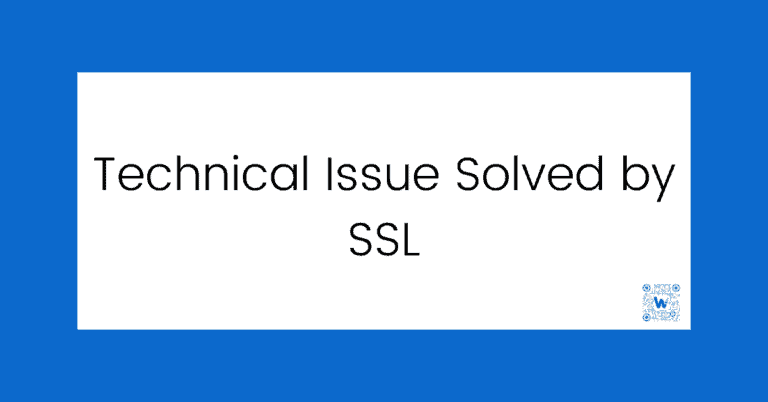You can set limits to minimize the effect of unlimited rewrite requests on your creative process. For example, you can limit the number of rewrites you are willing to make and stick to it. If a client insists on additional rewrites, politely explain that it is beyond the scope of your agreement and ask them to cover any additional costs associated with the work.
Consider setting a timeline for each request and communicating it to the client, so they know what to expect. Finally, ensure that you document all conversations related to rewriting requests with deadlines and expectations in writing so everything is clear later.
Develop A Healthy Relationship With Your Clients From The Beginning
You must be transparent and honest with your client from the beginning. Be clear about your rates, your policies, and your expectations. Once you have established a good rapport with your client, managing their expectations and avoiding potential conflicts will be easier.
Be sure to discuss the project’s scope in detail and get the client’s approval before proceeding. This will help to avoid misunderstandings later on. If the client does request a rewrite, be sure to manage their expectations. Let them know what is possible and what is not. Be firm but fair, and try to find a mutually agreeable solution.
Explain The Purpose Of Rewrites And Revisions To Your Client
It is common for clients to request revisions to a document after it has been completed. Sometimes, these requests are valid and improve the document’s quality. However, in other cases, the client may request a revision for the wrong reasons.
There are three main types of revisions that clients can request:
- Editing Revisions
These are changes that improve the quality of the writing, such as correcting grammar errors or enhancing clarity.
- Formatting Revisions
These changes improve the document’s appearance, such as changing the font size or margin width.
- Content Revisions
These changes alter the document’s substance, such as adding or removing information.
Define And Articulate A Rewrite Request
When it comes to revisions, it’s essential to understand what constitutes a revision. This will help minimize the number of rewrite requests and the interference they can cause.
A revision is usually defined as a change made to a document after it has been finalized and submitted. This can include everything, from correcting spelling errors to making significant changes to the document’s structure. Revisions can be made by the author or by someone who is editing the document.
Clearly defining what constitutes a revision is essential to minimize the number of rewrite requests.
Expert Advice On How To Handle Rewrite Requests
Try to understand the reason for the rewritten request. Is it due to a change in direction, a misunderstanding, or something else? If you can understand the reasoning behind the request, you can often make the necessary changes with little difficulty.
Provide a clear and concise explanation of the changes you need to make. This will help to ensure that everyone is on the same page and that the changes are made correctly.
Make sure to track all the changes made so you can quickly revert to a previous version if necessary. Following these simple tips can minimize the interference caused by rewrite requests and keep your workflow moving smoothly.
Define The Number Of Rewrites Requested In Your Fee
As a professional content writer, it is important to clearly define how many revisions are included in your fee to minimize interference caused by rewrite requests. By doing this, you can avoid potential conflicts with clients who may feel that they are entitled to unlimited revisions.
It is also important to keep in mind that each round of revisions takes time and can interfere with your other writing projects. Therefore, it is important to set a reasonable limit on the number of edits you are willing to do. Once you have reached your limit, you can explain to the client that further modifications will require an additional fee.
Determine When And How To Bill For Rewrite Requests
Change requests are inevitable. No matter how well you plan or how accurately you scope the work, there will always be things you should anticipate. The key is to minimize the number of change requests and manage them efficiently when they come in.
Inform The Client At Every Step
As a professional, keeping your client informed about each process phase is important to minimize interference caused by rewrite requests. You can do this by sending regular updates and progress reports and holding meetings (virtual or in-person) to discuss the project.
By doing this, you will help the client understand the design process and feel comfortable with the amount of input they need to provide. In turn, this will minimize the chances of them requesting significant changes once the project is complete.
Be Flexible And Good-Willed
We all know how frustrating it can be when clients request a complete rewrite of an article or document we have spent hours, days, or even weeks working on. It can feel like a personal attack, and it’s easy to get defensive and start bargaining with the client to minimize the interference caused by their request.
However, it’s important to remember that the client is not trying to be difficult, and they probably have valid reasons for wanting a rewrite. Showing goodwill and flexibility will go a long way in keeping the client happy and minimizing the impact of their request.
So the next time a client asks for a complete rewrite, keep these things in mind. It helps you get through the process a little bit more smoothly.
Embrace Subjective Design And Accept Any Mistakes You Make
One of the most difficult challenges for any designer is to accept that design is subjective. No matter how skilled you are or how much experience you have, there will always be someone who doesn’t like your work. This is just a fact of life that you need to accept if you want to be successful in this field.
However, it’s important to remember that not all feedback is created equal. Some people will not be fans of your style, no matter what you do. The people you need to listen to are those who have specific criticisms of your work. You should ignore those people.
Make Sure You Put A Stop To Things When They Need It
As content writers, you might often get requests from clients to “rewrite” a section of their project. While it’s essential to try to accommodate your client’s needs, you must also be aware of the potential downside of making too many changes.
Interference caused by rewrite requests can often lead to a decrease in quality and an increase in the time it takes to complete the project. Therefore, it’s essential to stop rewriting requests when needed to minimize interference and keep the project on track.
If you find yourself repeatedly getting requests to rewrite a particular section, it’s a good idea to take a step back and look at the overall project. Is there something about the design or execution that’s causing the rewrite requests? If so, make the necessary changes to avoid future issues.
Be Careful Not To Waste Your Time Working With The Wrong Clients
No matter how talented and experienced you are as a writer; there will always be clients who are unhappy with your work. It’s inevitable. And when it happens, it can be extremely frustrating, not to mention time-consuming, to have to go through the rewrite process.
That’s why it’s so important to be selective about your clients. It’s better to have a smaller client base of happy clients than a large client base of unhappy ones. Not only will this save you time and energy in the long run, but it will also help you to avoid the interference caused by rewrite requests.
Conclusion
In conclusion, rewrite requests can interfere with content writers’ productivity. However, there are several strategies that content writers can use to minimize this interference. These strategies include setting clear expectations, communicating with editors and clients early and often, and using an editing workflow that fits their needs.
By following these strategies, content writers can work more efficiently and minimize the interference caused by rewrite requests.
Read More: Semantic SEO
FAQs
- What is the number one strategy to minimize interference caused by rewrite requests?
The number one strategy to minimize interference caused by rewrite requests is to create a robust content creation process that is not prone to interference.
A content production process is the set of steps and rules that are followed when creating content. It includes all the tasks involved in the process, from identifying needs and goals, gathering data, developing ideas and writing copy to publish and promoting it.
- What are some tips for dealing with clients who are too demanding or have unrealistic expectations?
Clients are the ones who pay the bills, so they have the right to be demanding. But it is up to you as a content writer to find a balance between their demands and what is feasible.
Here are some tips for dealing with clients who are too demanding or have unrealistic expectations:
- Be flexible and patient when dealing with clients
- Always listen to your gut feeling; if something doesn’t feel right, then don’t do it
- Keep your emotions under control when dealing with difficult clients
- How important is it for a writer to be flexible when it comes to working with clients?
The more flexible writers are, the better they are at their job. This is because they can adapt their writing style to suit their client’s needs. They also have an easier time understanding what the client needs from them, which can make for a better end product that meets both parties’ expectations.









